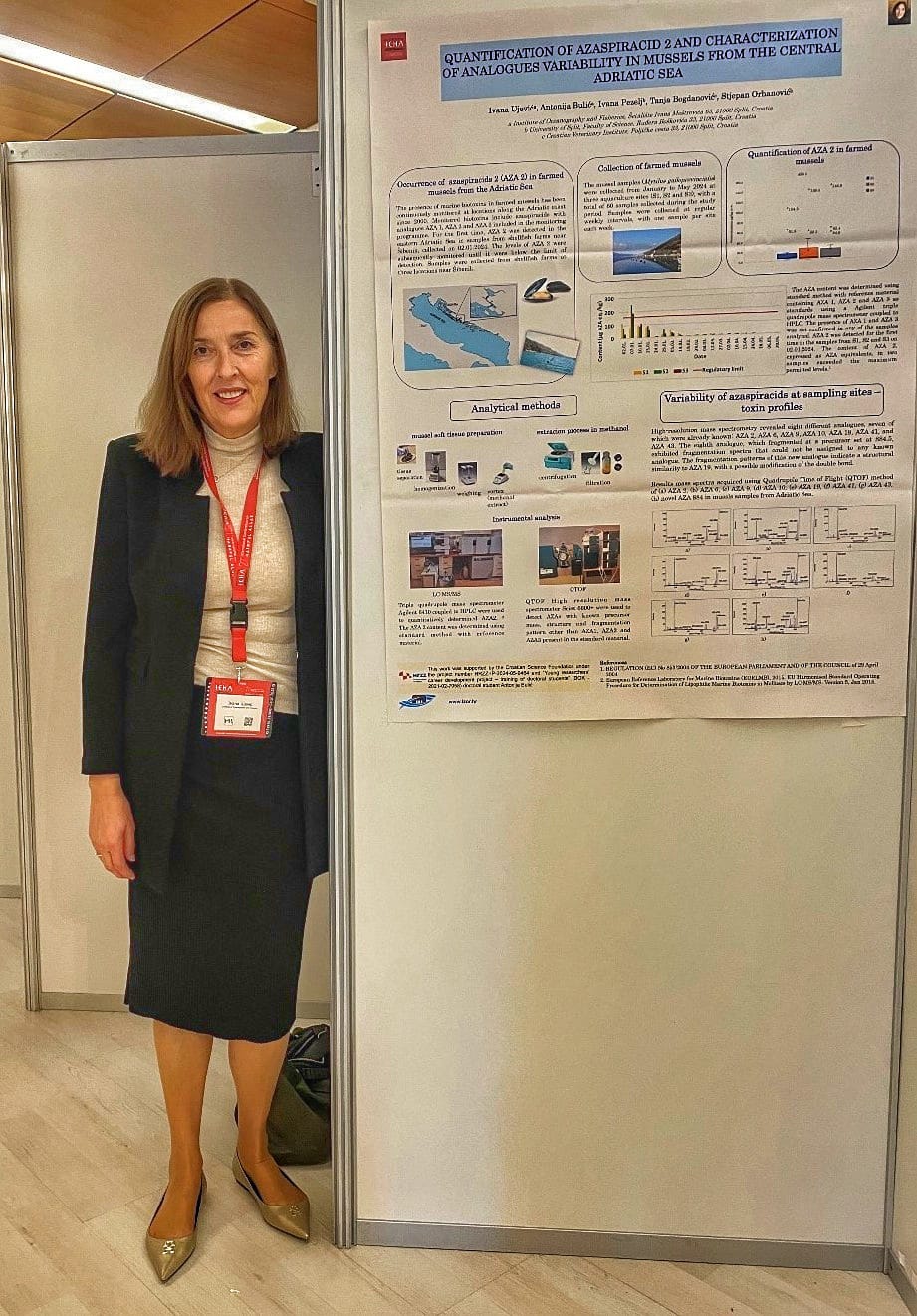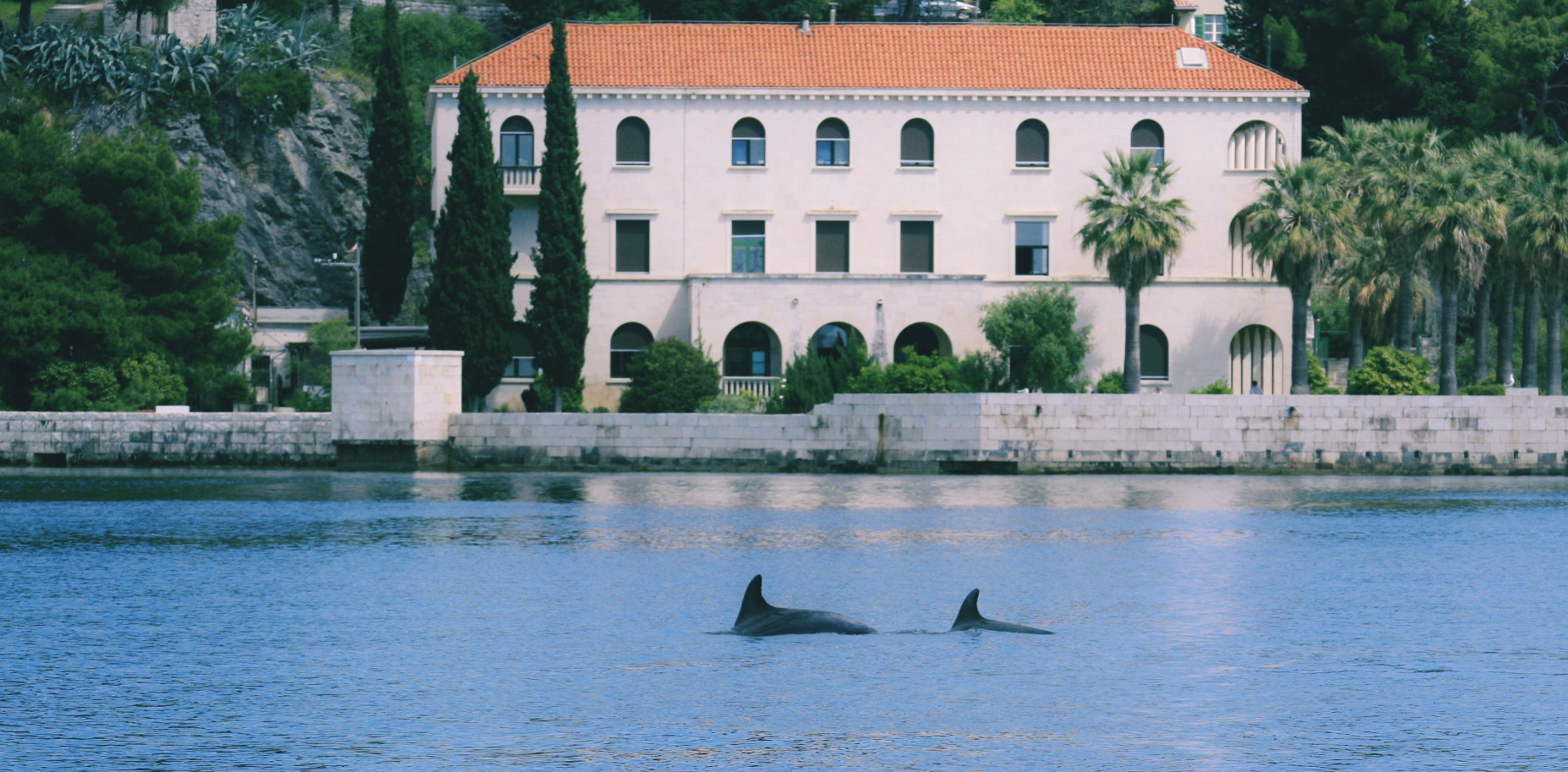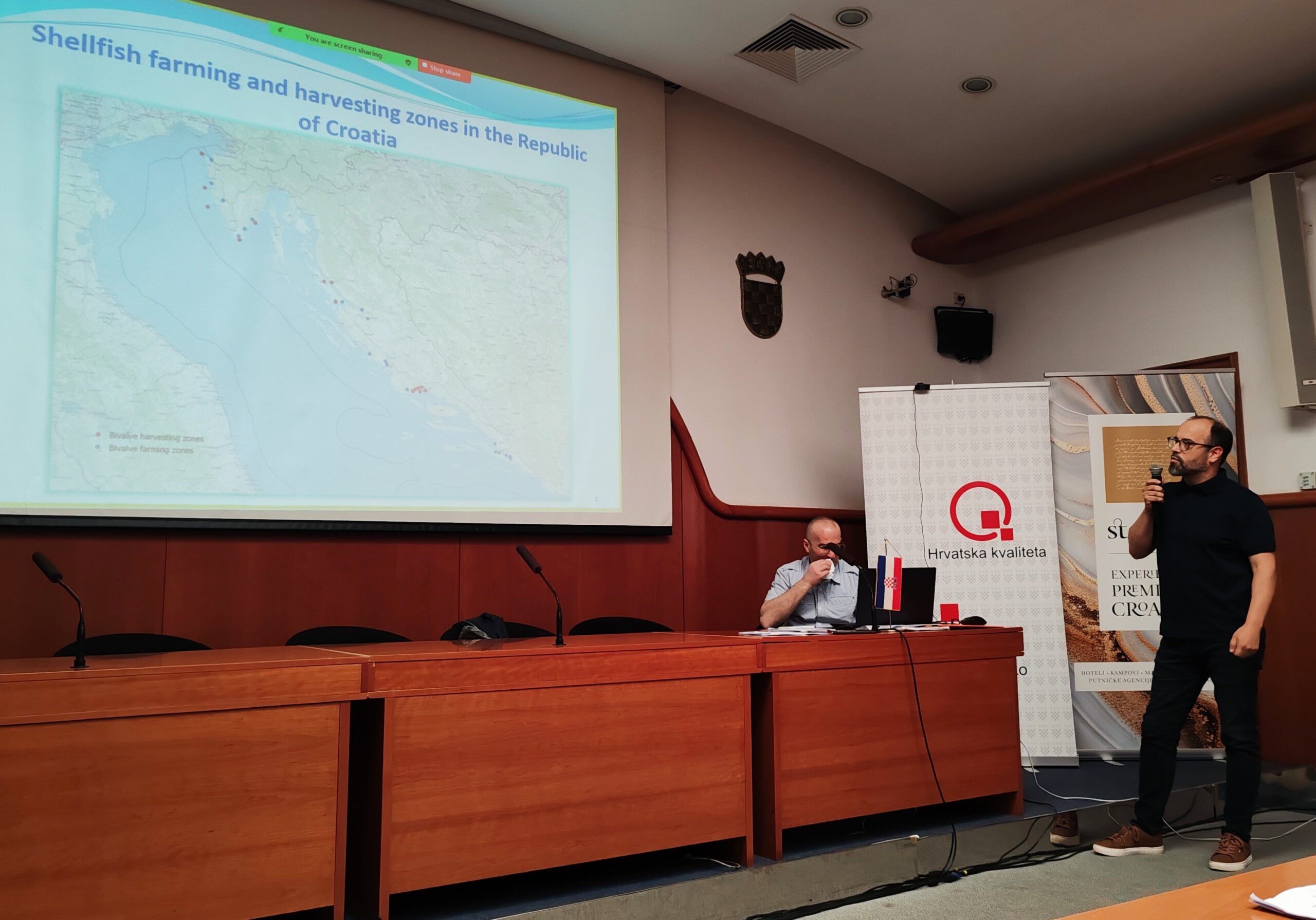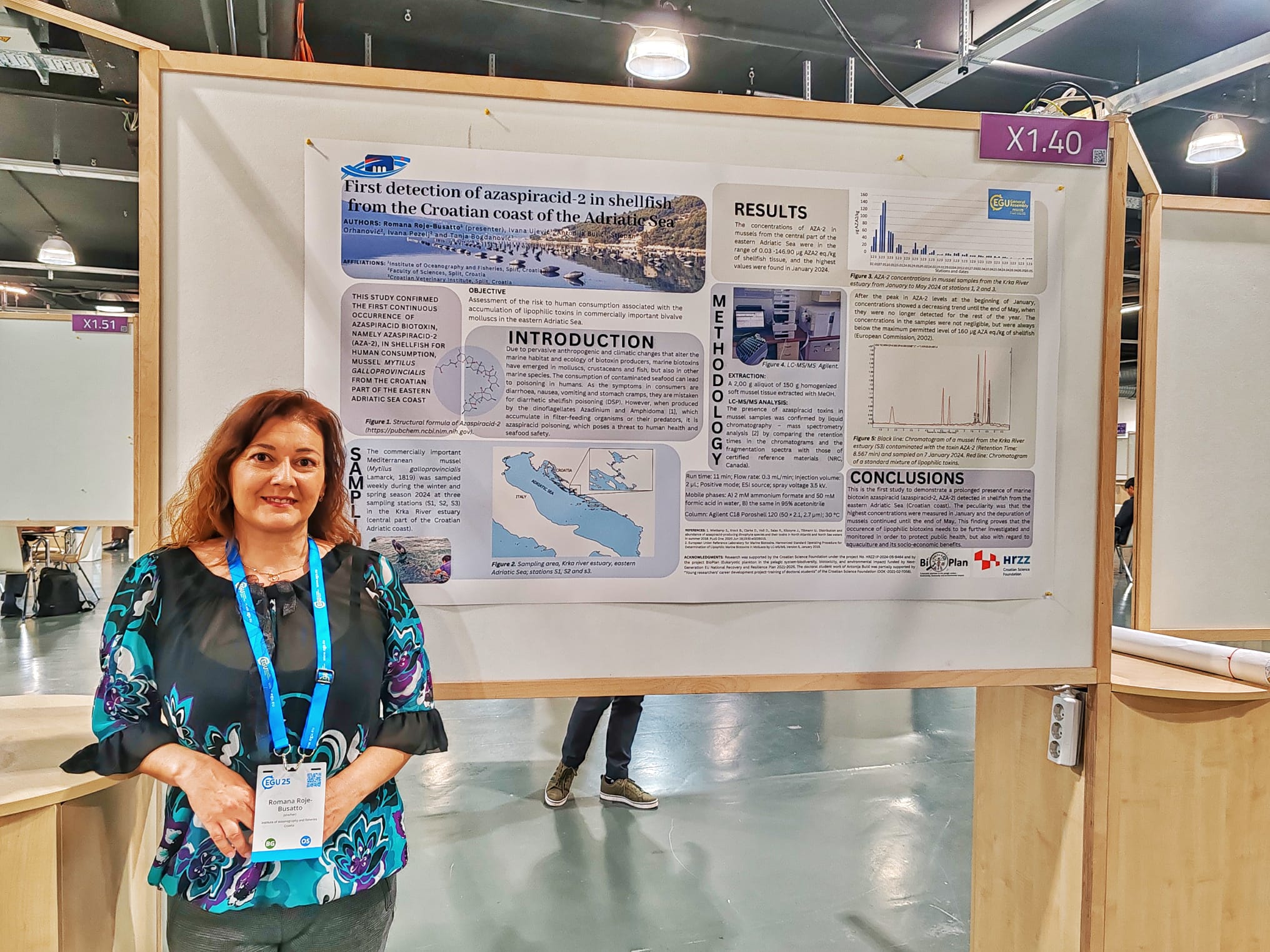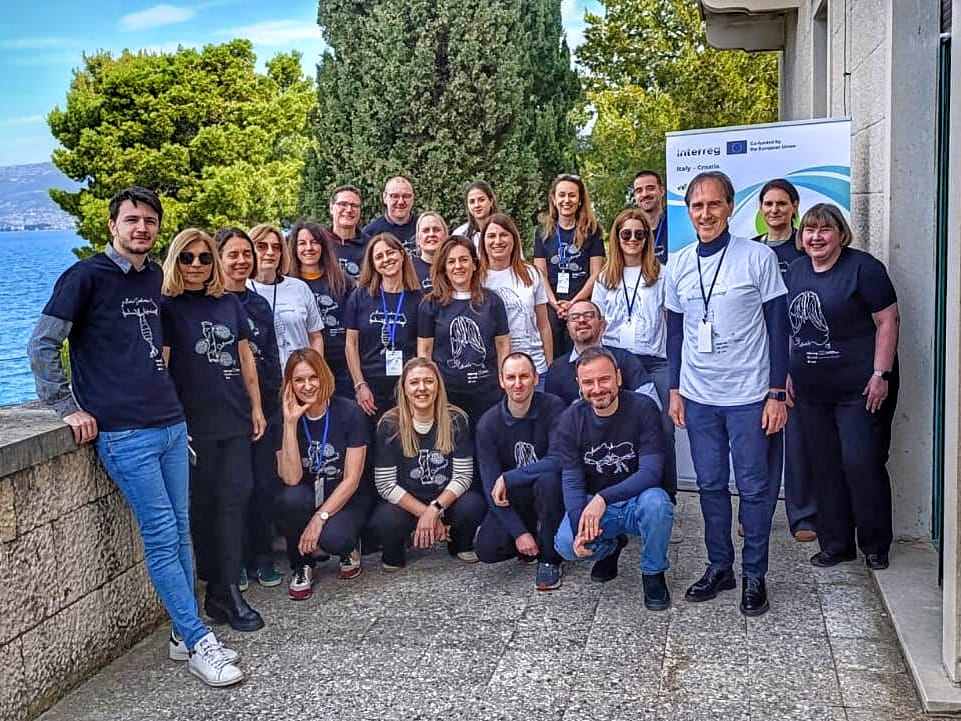At prestigious global event, the 21st International Conference on Harmful Algae (ICHA2025), held from 19 to 24 October 2025 in Punta Arenas (Chile), two scientists from our Institute presented the results of their research conducted under the HRZZ project BioToks (IP-2024-05-9464), together with their teams, contributing to the shared mission of sustainable aquaculture and the protection of the planet’s waters for future generations. The International Conference on Harmful Algae (ICHA) is the world’s leading forum and the pinnacle of global collaboration in understanding and managing harmful algal blooms– a pressing threat to aquatic ecosystems, economies, and human health.
By bringing together leading experts from science, policy, and industry, ICHA fosters innovation, collaboration, and the exchange of knowledge at the highest level. The conference not only showcases groundbreaking research but also inspires actionable solutions to safeguard marine and freshwater environments, shaping the future of aquatic health and sustainability worldwide. By presenting their findings at this premier forum, our scientists reaffirmed the Institute’s role in knowledge exchange, advancing research, and contributing to the international mission of protecting aquatic environments for future generations.
Dr. sc. Ivana Ujević presented part of the results obtained from the Croatian Science Foundation project BioToks in collaboration with Antonija Bulić, Ivana Pezelj, Tanja Bogdanović, and Stjepan Orhanović. Research on marine biotoxins in mussel tissue from the Adriatic provides information on their possible presence and potential risks if levels exceed those legally prescribed. The presence of marine biotoxins in mussels has been continuously monitored at locations along the Adriatic coast since 2000. The biotoxin monitoring programme also includes three azaspiracids: AZA1, AZA2 and AZA3. Azaspiracids are a group of marine biotoxins first identified in 1995 after a poisoning case in the Netherlands, where people who consumed mussels developed digestive symptoms. In early 2024, one of the azaspiracids, AZA2, was detected for the first time in mussel samples from the Croatian Adriatic Sea. AZA2 levels were monitored for five months, during which they remained above the detection limit. High-resolution mass spectrometry revealed eight different analogues, seven of which are known from the scientific literature: AZA2, AZA6, AZA9, AZA10, AZA19, AZA41 and AZA43, while the eighth analogue showed spectra that cannot be attributed to any known analogue and represents a newly discovered one. The AZA2 toxin is synthesised by the phytoplankton organism Azadinium spinosum, AZA41 by Azadinium poporum, and AZA43 by Amphidoma languida, while AZA6, AZA9, AZA10 and AZA19 are metabolites formed in the mussel. Continued research through the activities of the BioToks project will provide insight into the distribution of biotoxins in the Adriatic Sea ecosystem as well as the causes and risks of their occurrence.
Dr. sc. Romana Roje Busatto presented compelling findings on marine toxin research in the study “Further Evidence for the Persistent Presence of Yessotoxins in the Eastern Adriatic Sea” conducted as part of the BioPlan (financed by Next-Generation EU) and BioToks projects. The study revealed the ongoing presence of yessotoxins in natural populations of mussels (Mytilus galloprovincialis) along the Croatian Adriatic Sea coast. While concentrations were moderate, the study uncovered recurrent presence and pronounced seasonal variability, shedding new light on the complex ecological dynamics of these marine ecosystems. Notably, the research confirmed that other lipophilic toxins, including azaspiracids (AZA1–3) and okadaic acid toxins (OA, DTX1–2, PTX1–2), as well as hydrophilic toxins from the amnesic (ASP; DA and epi-DA) and paralytic (PSP; STX, dcSTX, GTX1,4, GTX2,3, dcGTX2,3, NEO, dcNEO, C1,2, C3,4, GTX5, and GTX6) groups of toxins, were below detectable levels. This specificity emphasizes the critical ecological relevance of yessotoxins in the region and positions this study as a key reference for future monitoring and public health strategies. This research represents a collaborative effort by: Romana Roje Busatto, Ivana Ujević, Antonija Bulić, Nikša Nazlić, and Roman Garber. More information is available at: ICHA2025 – 21st International Conference on Harmful Algae

